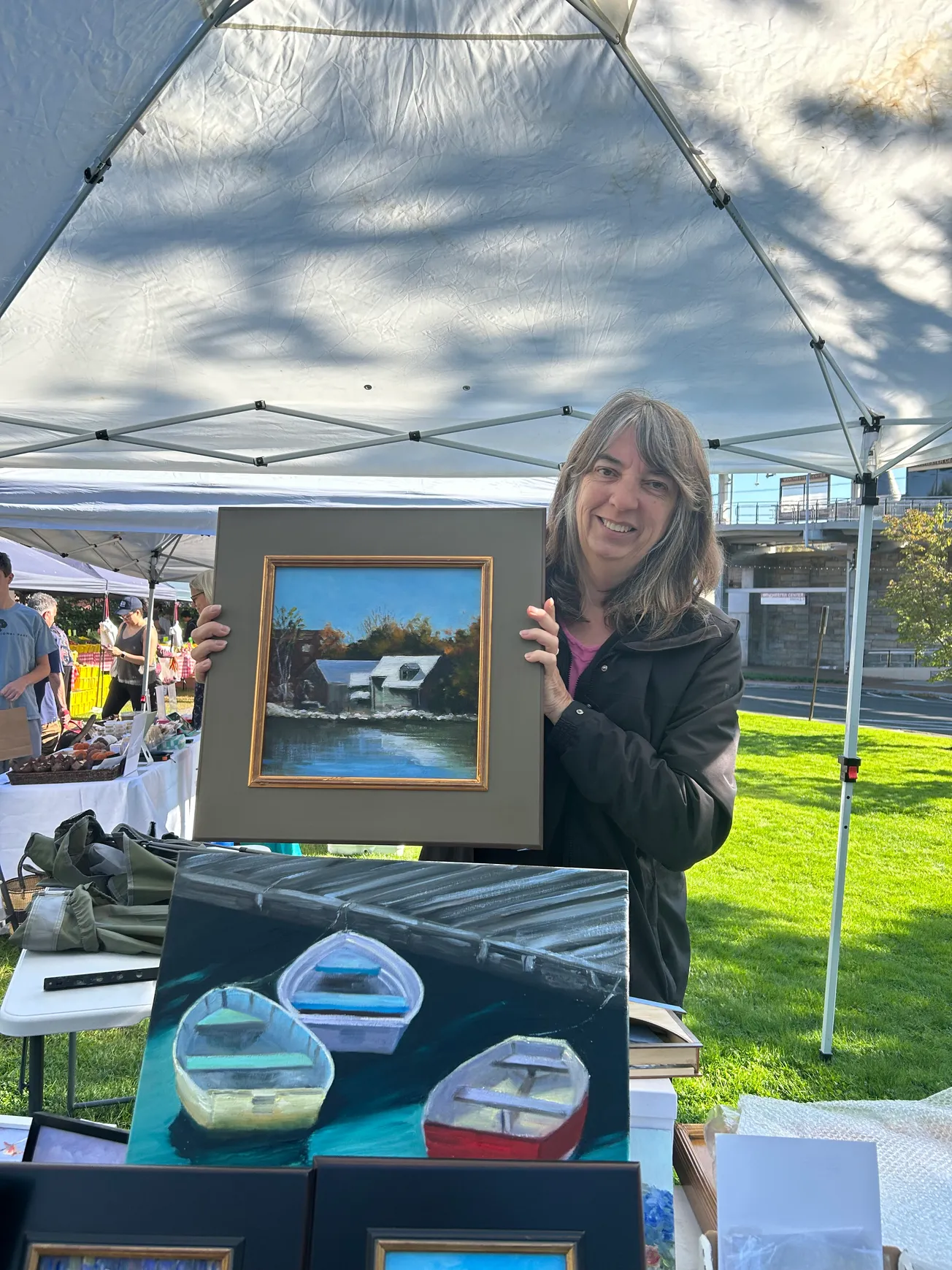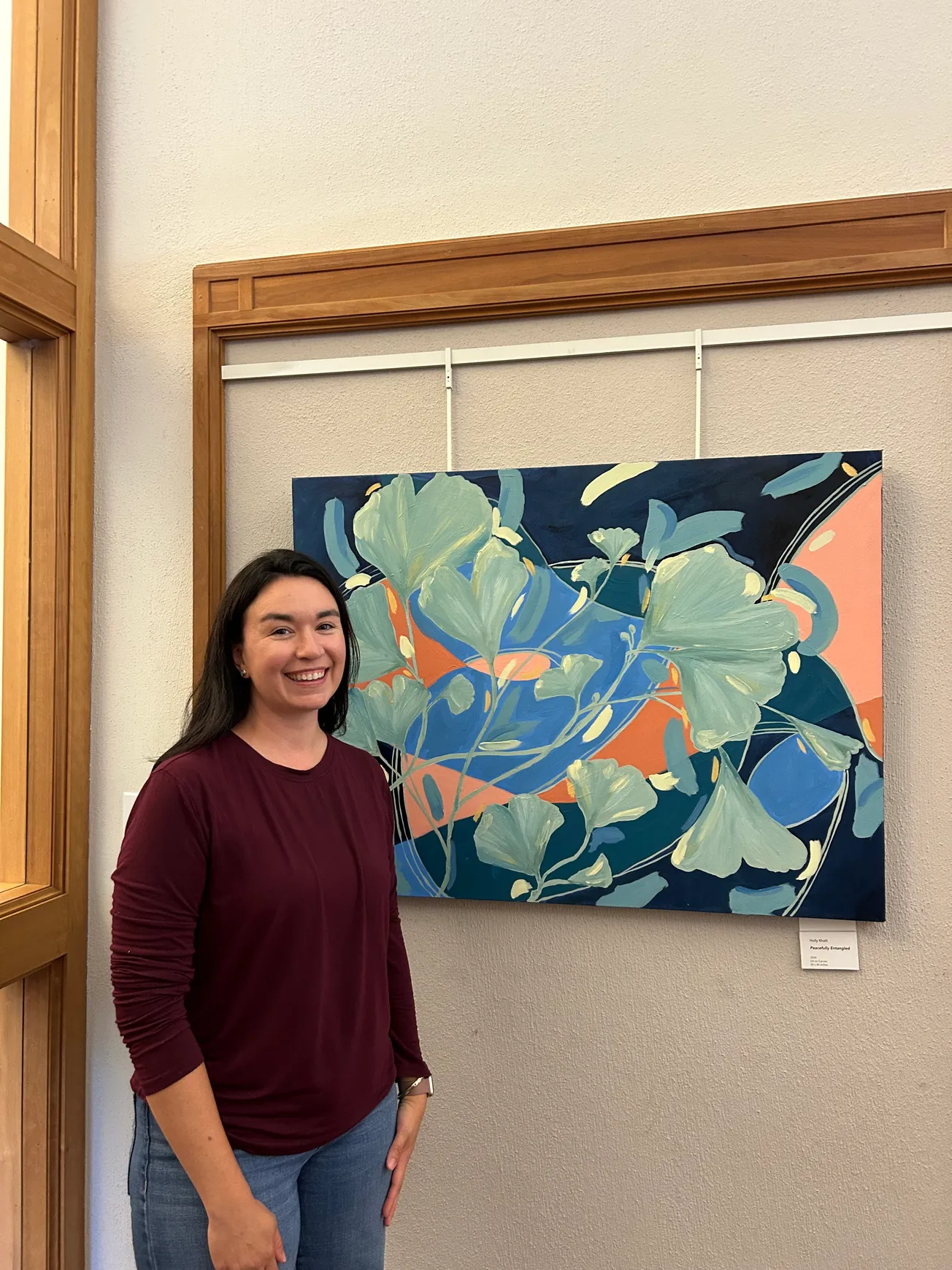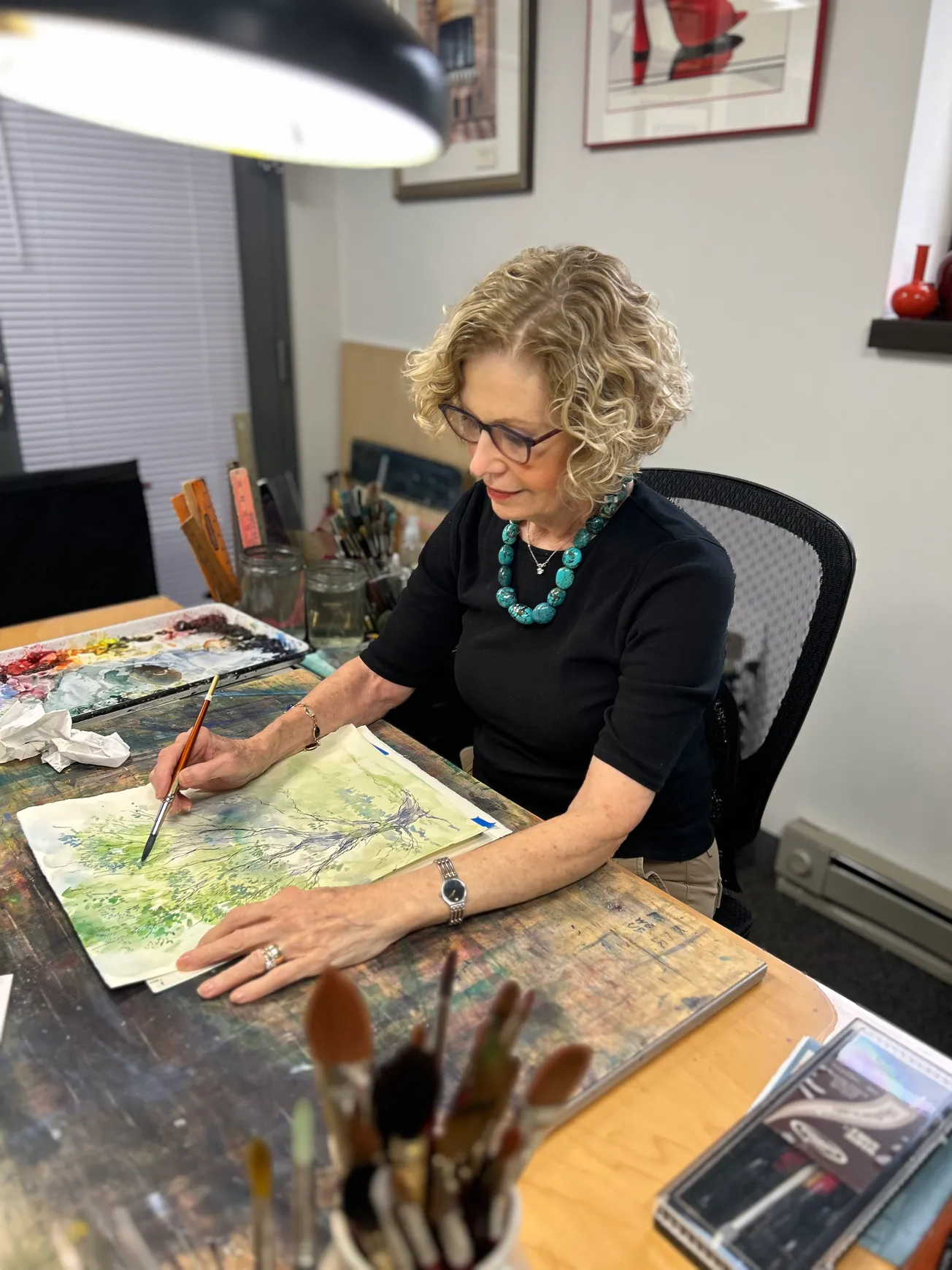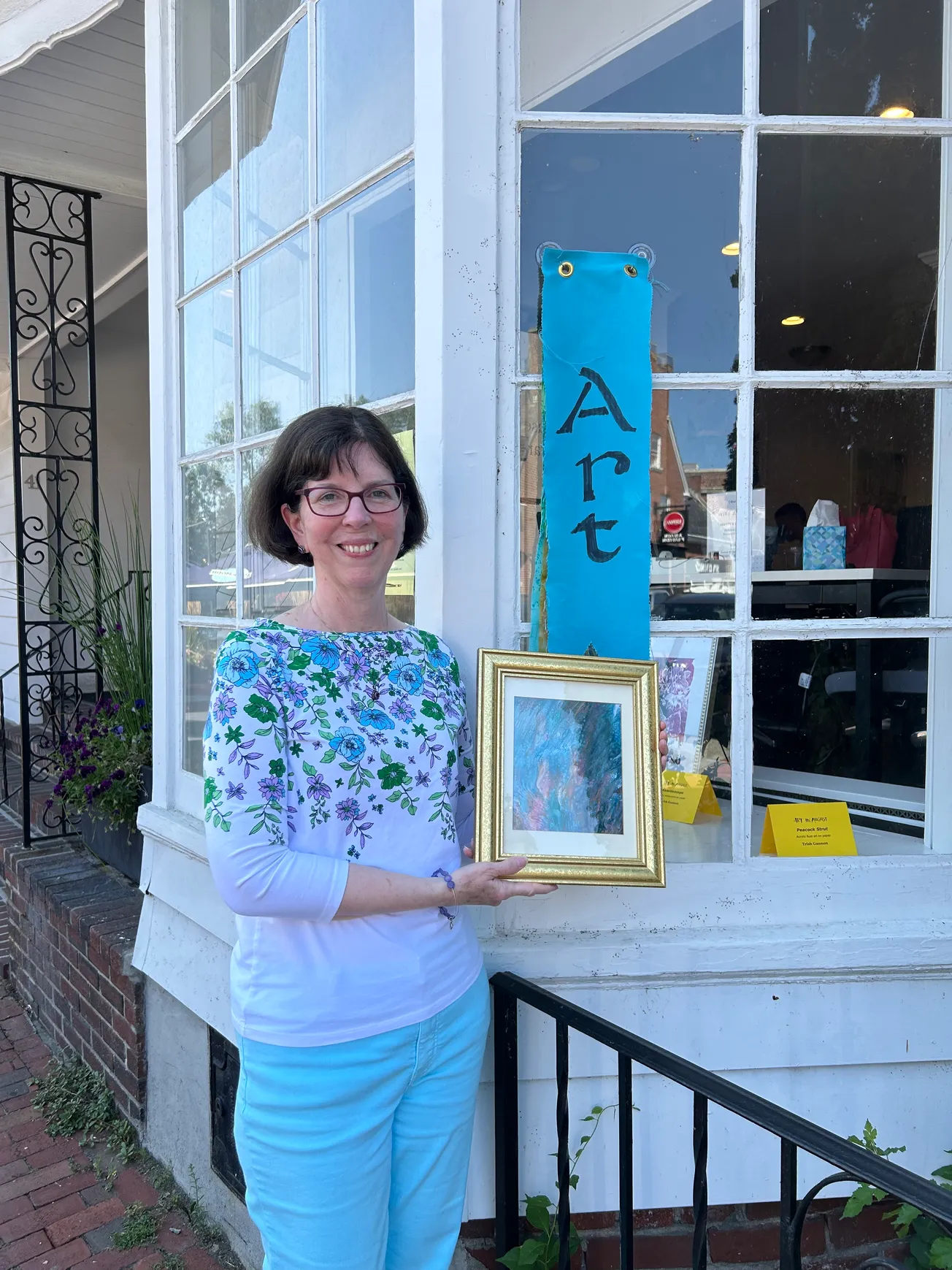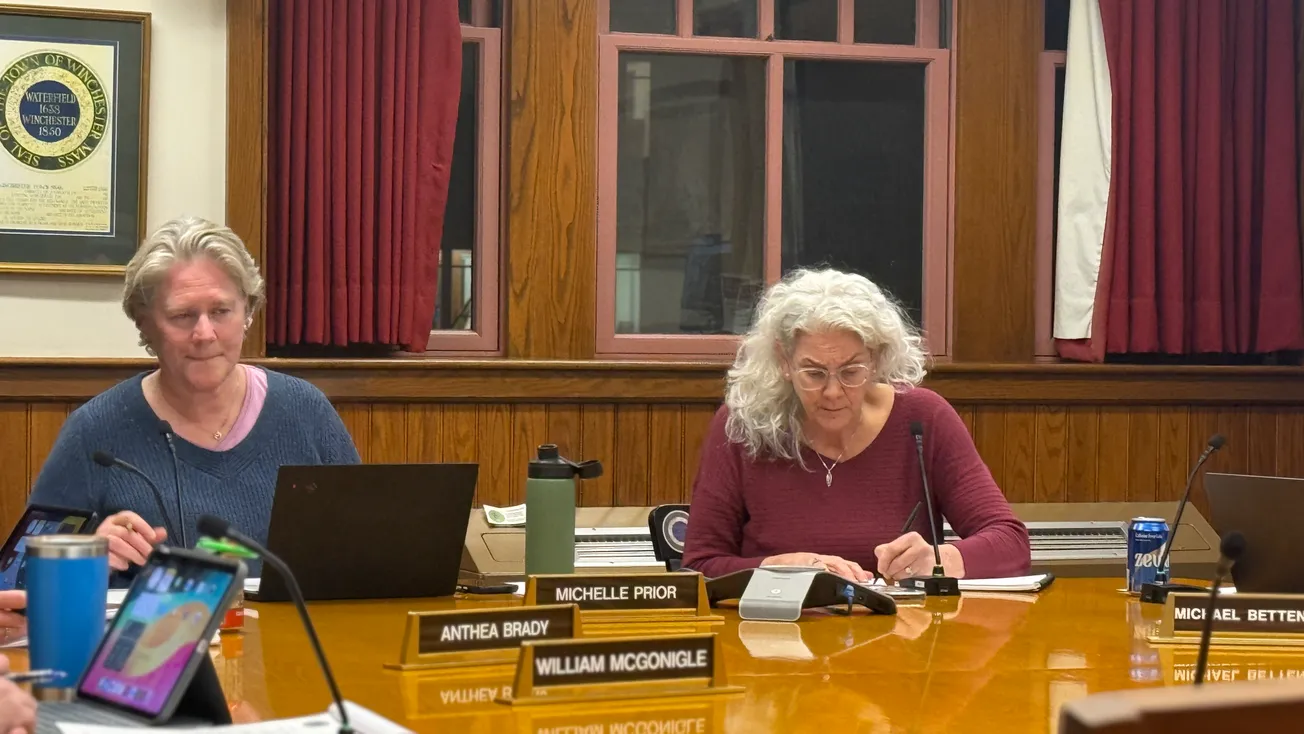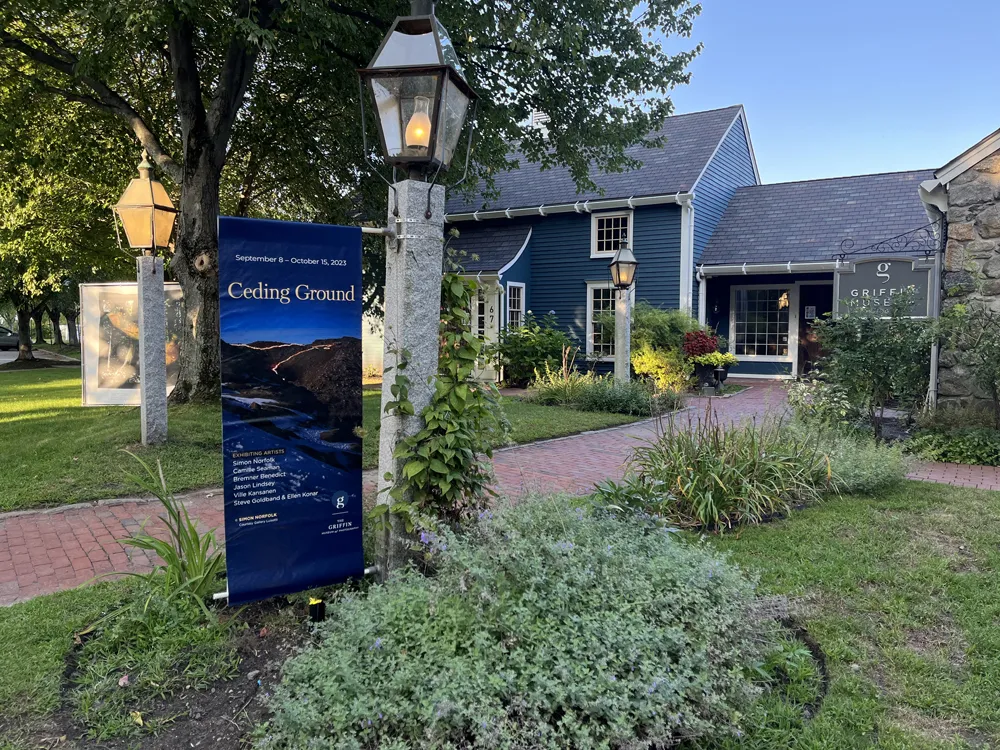Table of Contents
Winchester artist Kiyomi Yatsuhashi credits her mother as her inspiration. She uses shibori, the traditional Japanese tie-dye technique, to paint on fabric.
“My grandfather was antiques trader in Boston, and worked with the Museum of Fine Arts. I grew up with all the arts and culture in my home,” she says. “It nourished me my whole life.”
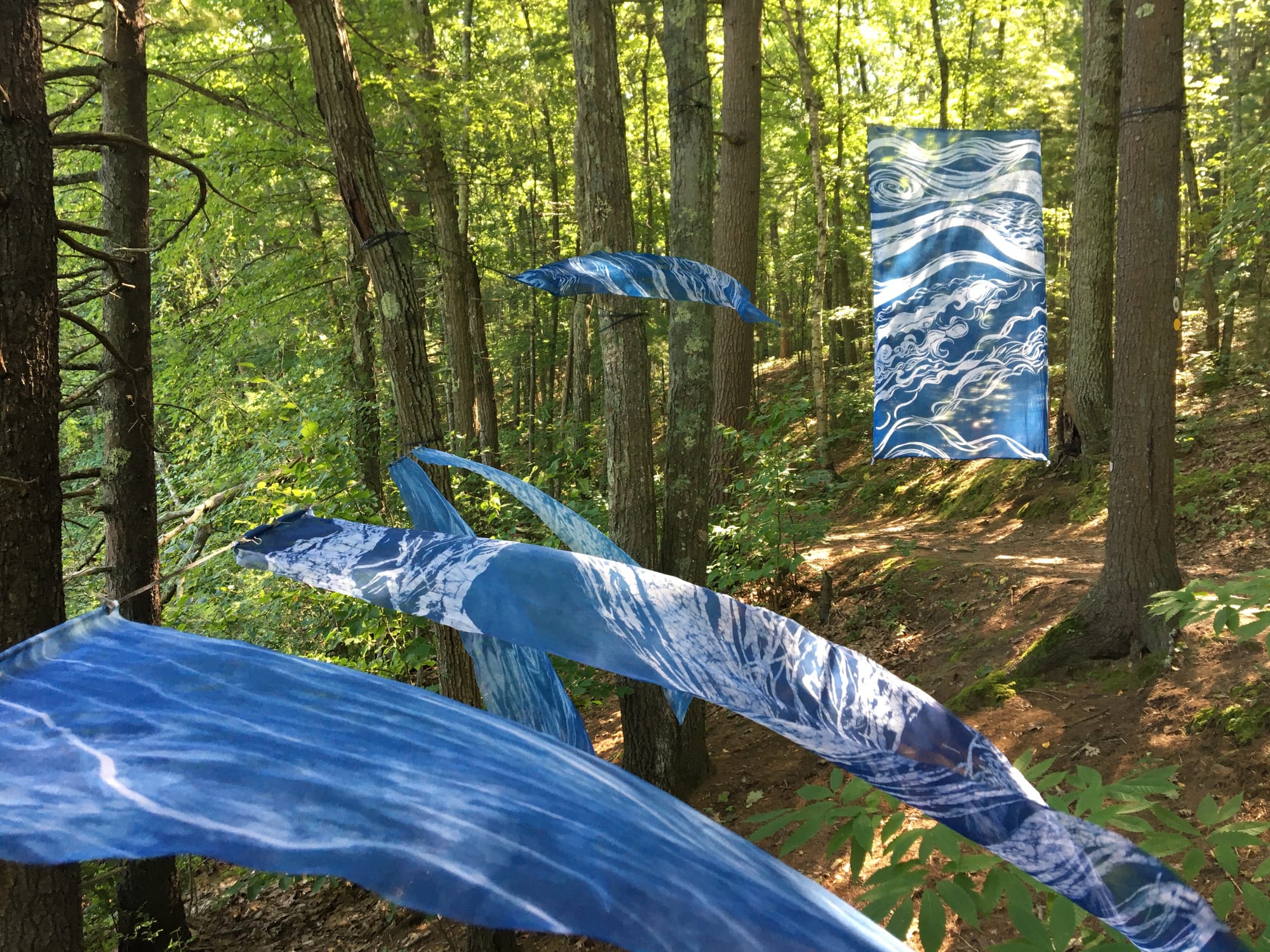
A Winchester native, her parents got her private art lessons in elementary school.
“My mother’s father designed kimonos, and my mother, who was a Nagasaki survivor was an ikebana designer. My father and his father dealt in antique Asian art. My family is documented at the Smithsonian. And when I was a young adult, I got a scholarship to research dyeing from the Japanese Ministry of Education,” she adds. “It was just meant to be.”
Yatsuhashi spent two years at the Kyoto City University of Arts, and after earning a masters degree, “I didn’t want to go home. I took a job in a gallery teaching ‘English for artists and art lovers.’ I wasn’t a teacher but I loved it.”
Her main art medium was batik, using the traditional dyeing technique called Rozome, which results in a “precise clean design,” she explains.
“It honors the independence of the artist using contemporary expression,” she says.
A lot of her work “is about my love for nature. And I had an outdoor installation in Concord. I love Winchester and the people who mentored me — I participated in the first Art in August back in 2015.”
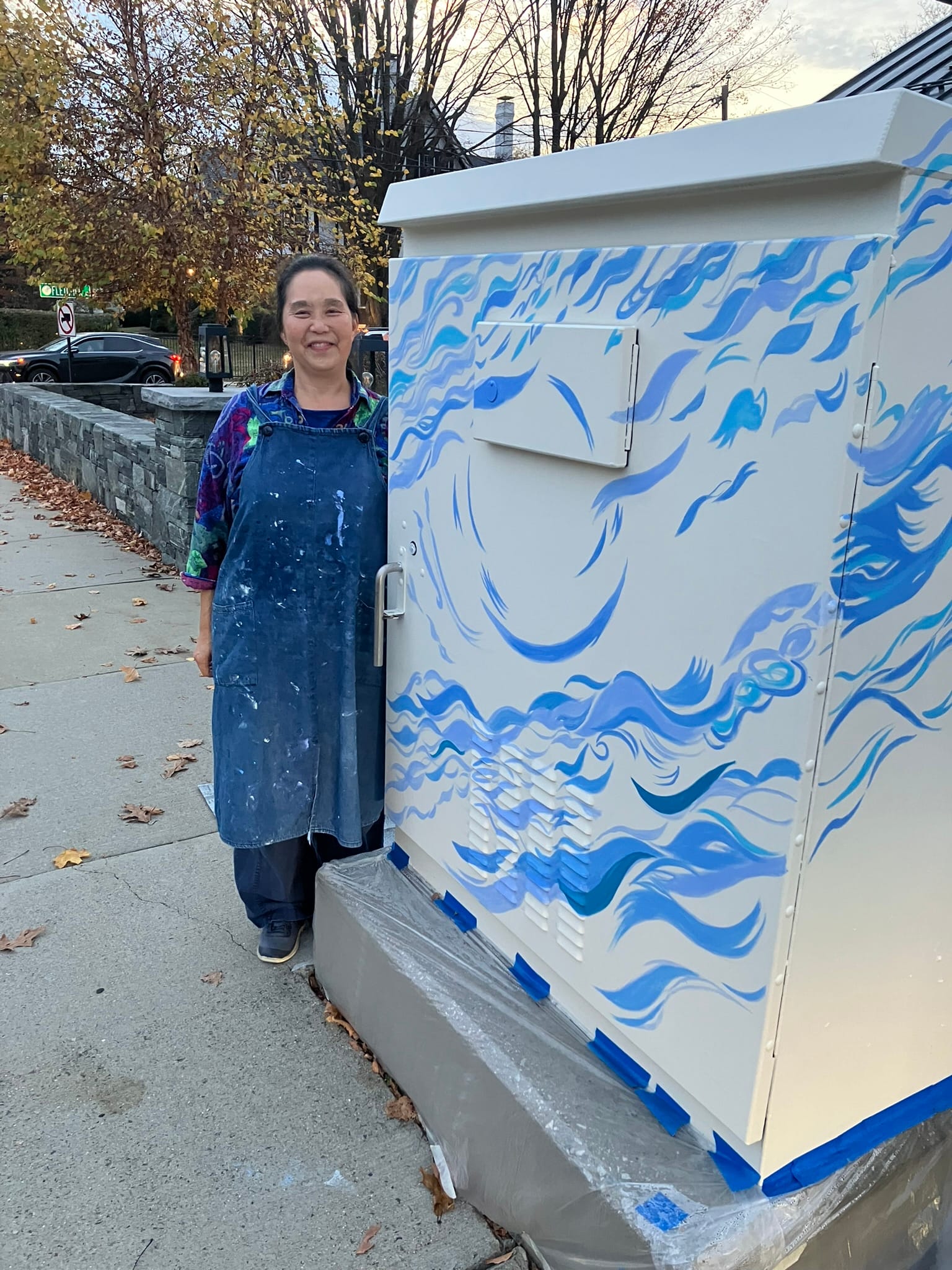
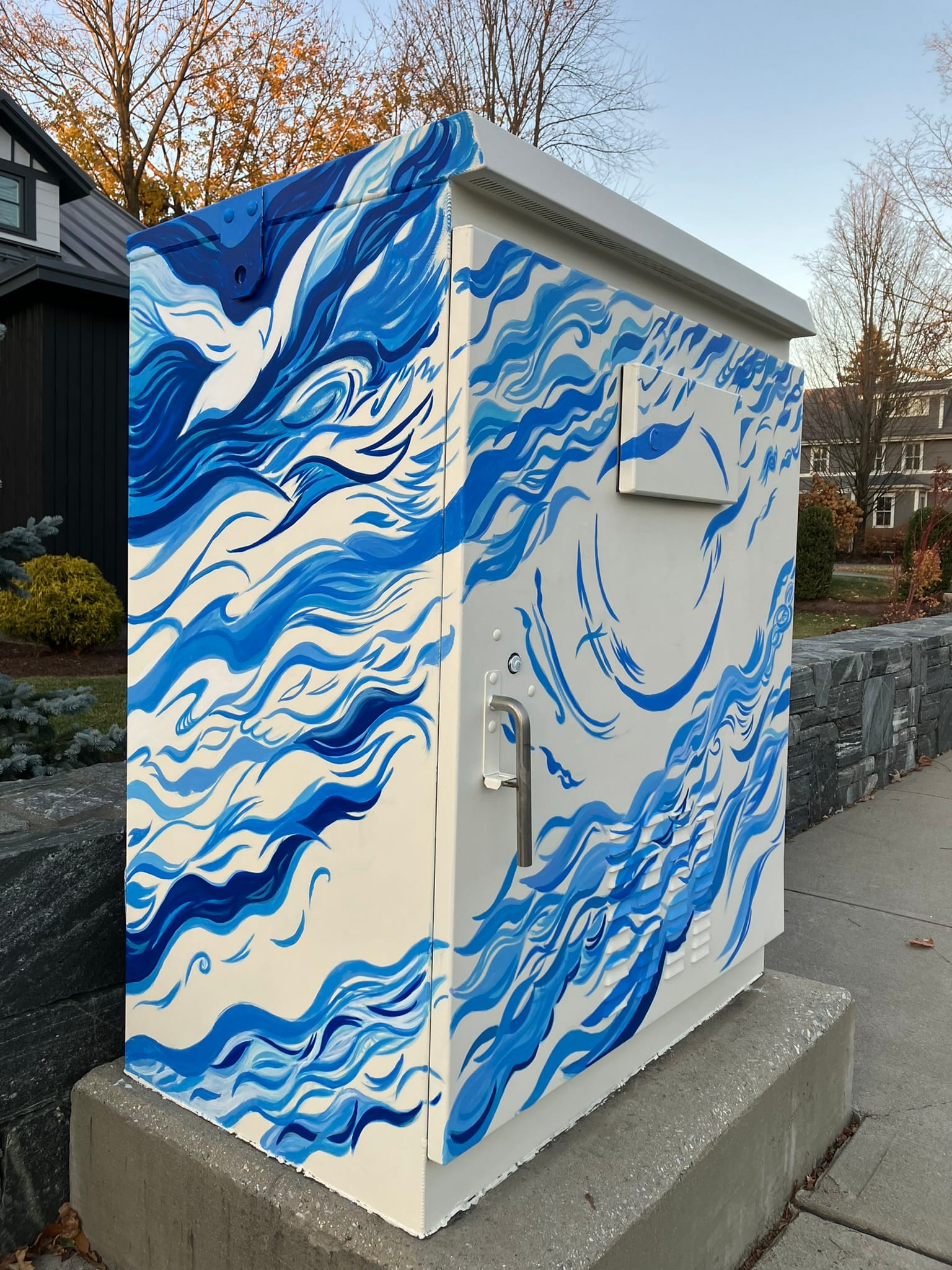
Kiyomi Yatsuhashi paints a utility box on Church Street. COURTESY PHOTOS/KIYOMI YATSUHASHI
Since 2002, Yatsuhashi has been using mostly indigo in her work.
“At Winchester High, I took the advanced art course and went to the MFA’s summer classes, after which I earned a double degree from there and from Tufts, a BA/BFA and a diploma,” she says. “I loved Tufts where I was able to explore my family’s culture, and I studied print making, ceramics and mixed media.
“At that time there was a store in Winchester called Design Flag where I worked part time, drafting and making banners for malls and trade shows,” she continues. “After 10 years, I became the manager.”
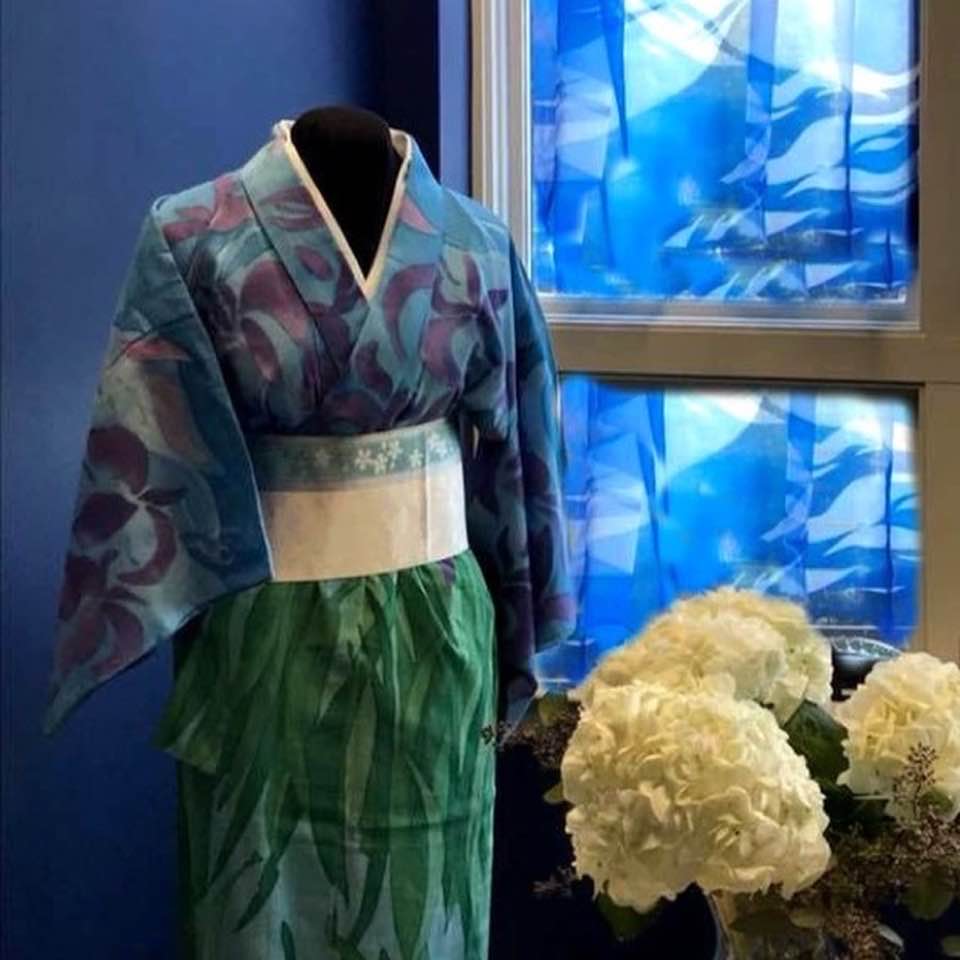
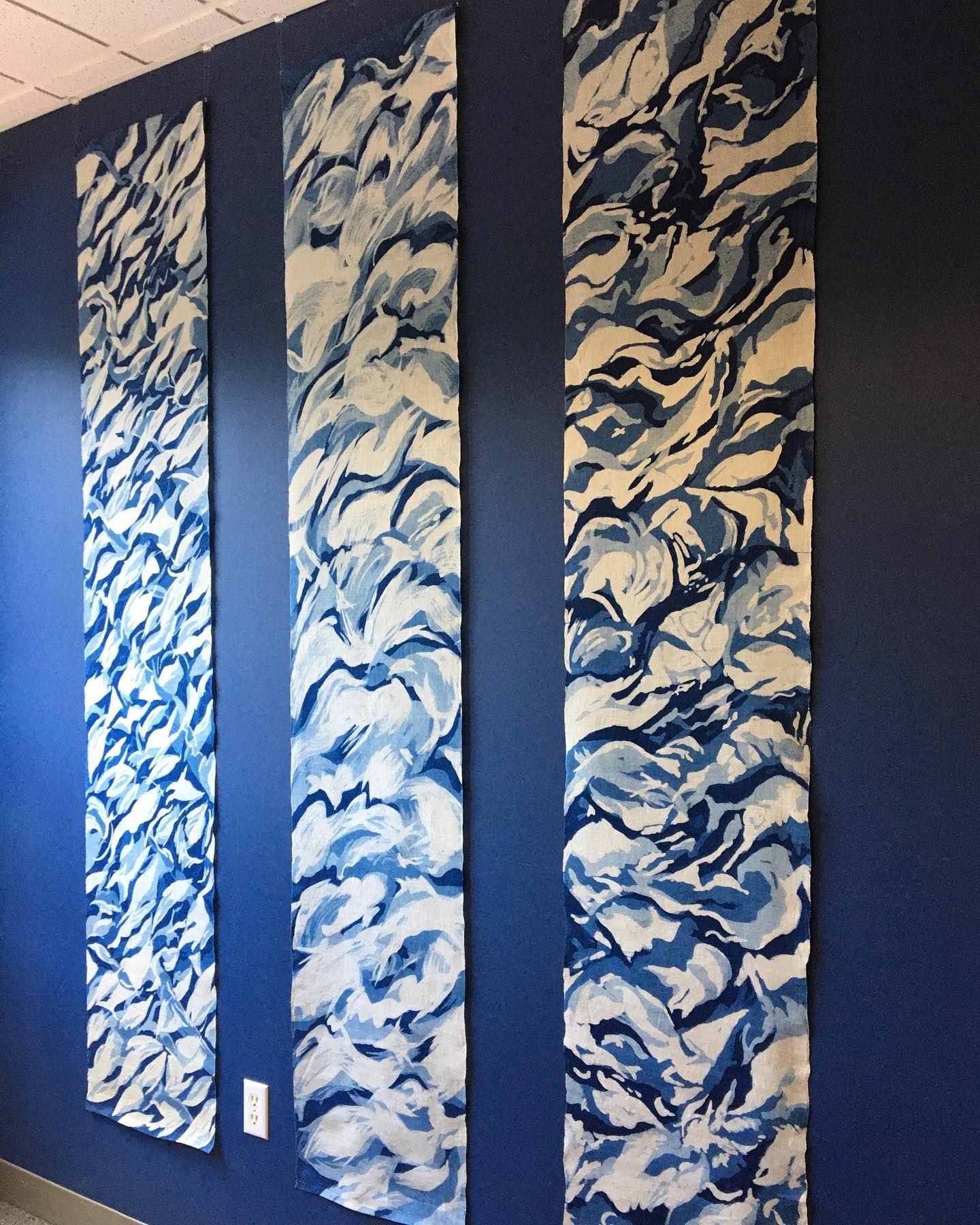
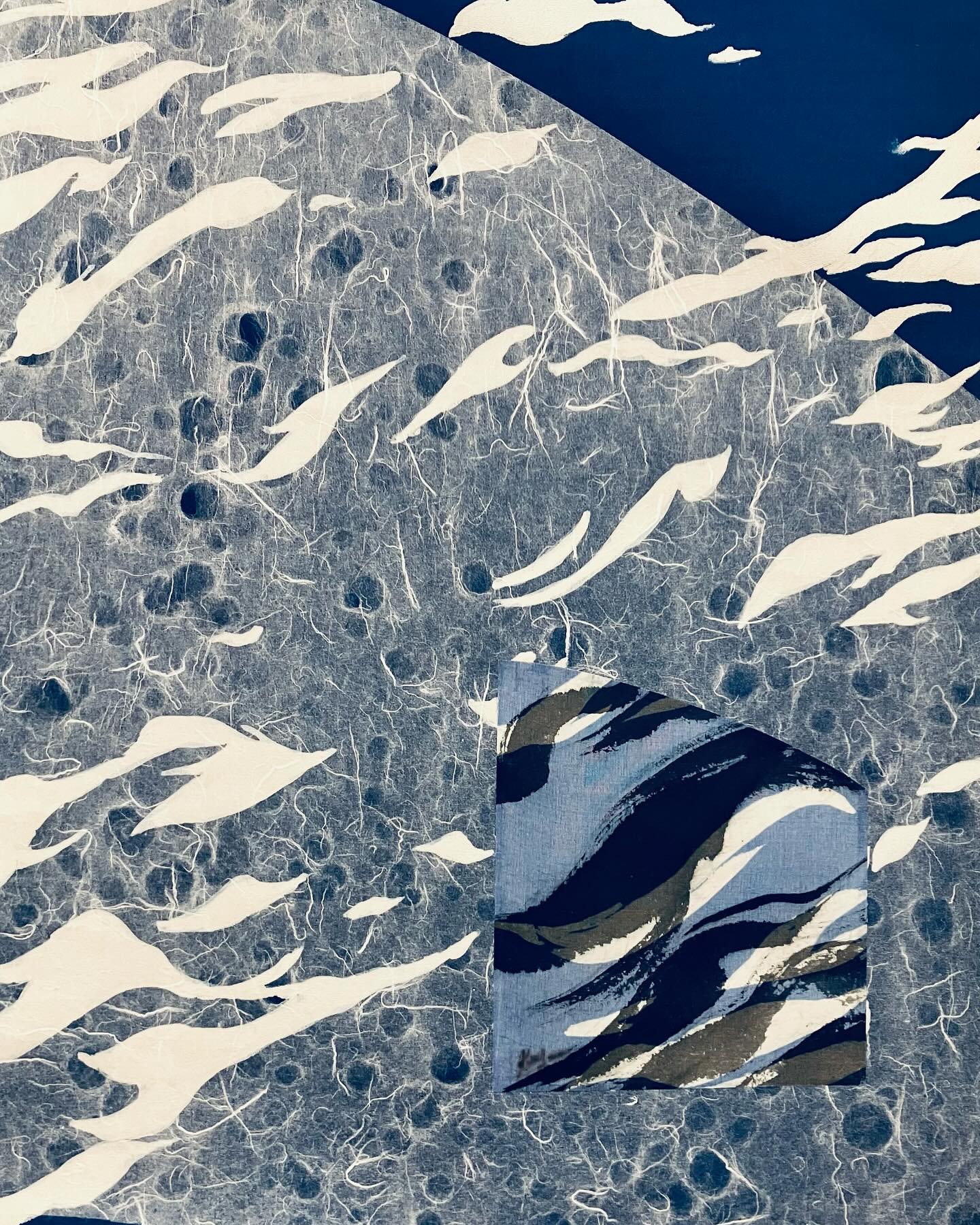
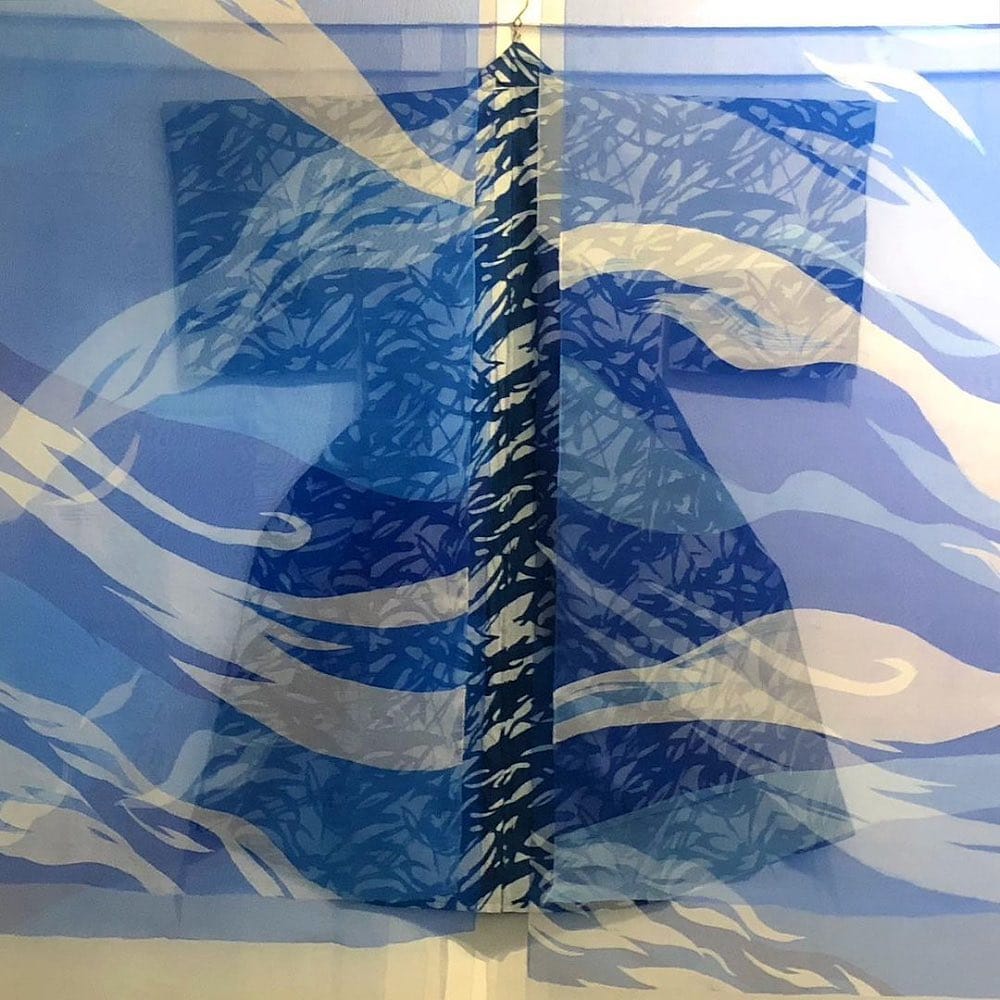

COURTESY PHOTO/KIYOMI YATSUHASHI
After returning from Japan, Yatsuhashi worked with Japanese exchange programs and also taught crafts. And these days, she says, “I’ve enjoyed teaching Japanese shibori and indigo dyeing at Studio on the Common, the Farmer’s Market and the Jenks Center.”
“Art is my thing,” she says.


